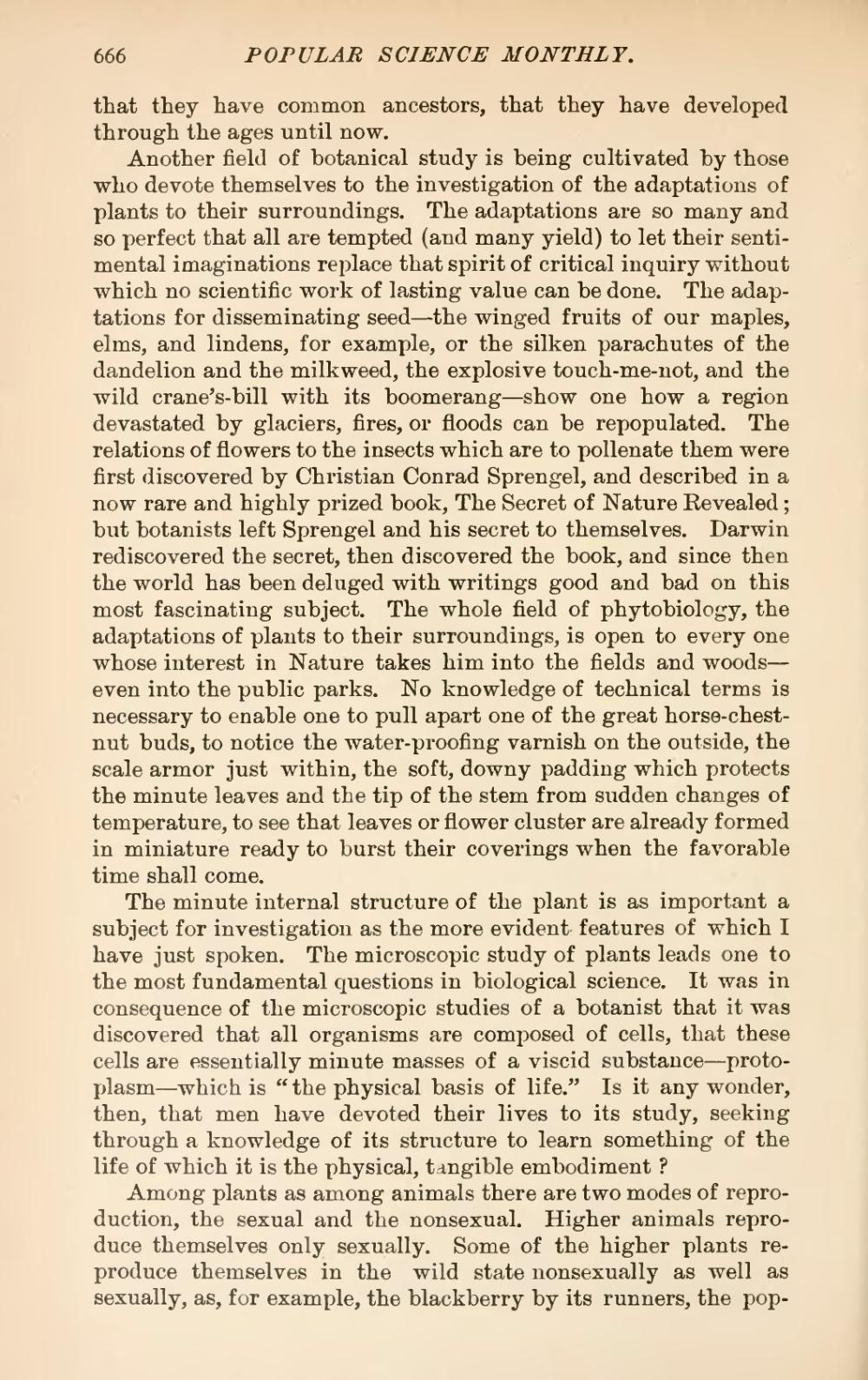that they have common ancestors, that they have developed through the ages until now.
Another field of botanical study is being cultivated by those who devote themselves to the investigation of the adaptations of plants to their surroundings. The adaptations are so many and so perfect that all are tempted (and many yield) to let their sentimental imaginations replace that spirit of critical inquiry without which no scientific work of lasting value can be done. The adaptations for disseminating seed—the winged fruits of our maples, elms, and lindens, for example, or the silken parachutes of the dandelion and the milkweed, the explosive touch-me-not, and the wild crane's-bill with its boomerang—show one how a region devastated by glaciers, fires, or floods can be repopulated. The relations of flowers to the insects which are to pollenate them were first discovered by Christian Conrad Sprengel, and described in a now rare and highly prized book. The Secret of Nature Revealed; but botanists left Sprengel and his secret to themselves. Darwin rediscovered the secret, then discovered the book, and since then the world has been deluged with writings good and bad on this most fascinating subject. The whole field of phytobiology, the adaptations of plants to their surroundings, is open to every one whose interest in Nature takes him into the fields and woods—even into the public parks. No knowledge of technical terms is necessary to enable one to pull apart one of the great horse-chest-nut buds, to notice the water-proofing varnish on the outside, the scale armor just within, the soft, downy padding which protects the minute leaves and the tip of the stem from sudden changes of temperature, to see that leaves or flower cluster are already formed in miniature ready to burst their coverings when the favorable time shall come.
The minute internal structure of the plant is as important a subject for investigation as the more evident features of which I have just spoken. The microscopic study of plants leads one to the most fundamental questions in biological science. It was in consequence of the microscopic studies of a botanist that it was discovered that all organisms are composed of cells, that these cells are essentially minute masses of a viscid substance—protoplasm which—is "the physical basis of life." Is it any wonder, then, that men have devoted their lives to its study, seeking through a knowledge of its structure to learn something of the life of which it is the physical, tangible embodiment?
Among plants as among animals there are two modes of reproduction, the sexual and the nonsexual. Higher animals reproduce themselves only sexually. Some of the higher plants reproduce themselves in the wild state nonsexually as well as sexually, as, for example, the blackberry by its runners, the pop-
